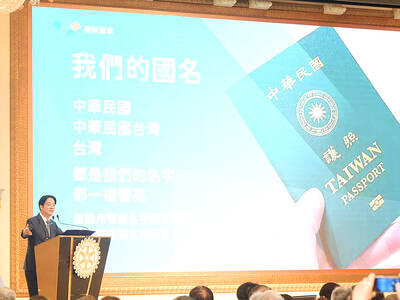India’s rupee led gains in Asian currencies, completing its best week in 12 years, on signs overseas funds are returning to buy local assets aided by cuts in borrowing costs by global central banks.
Seven of the 10 most-active currencies in Asia excluding the yen strengthened this week as the MSCI Asia-Pacific Index rose 1.2 percent, extending last week’s 6 percent advance.
The rupee climbed 3.8 percent to 47.66 per US dollar in Mumbai, from 49.4575 on Oct. 31, data compiled by Bloomberg show. That is the biggest weekly gain since March 1996. Thailand’s baht and the Philippine peso strengthened 0.3 percent to 34.96 and 48.81 respectively in the week.
The New Taiwan dollar gained for a second week, the longest winning streak in more than three months.
“It’s difficult to see further weakening in the Taiwan dollar,” said Daniel Soh, an economist at Forecast Pte in Singapore. “The cross-strait policy measures will provide some support to the currency, as this is positive to the economies on both sides.”
The NT dollar rose 0.5 percent to NT$32.824 against the dollar, from NT$33 on Oct. 31, according to Taipei Forex Inc.
The yen headed for weekly gains against the euro and the British pound on speculation global interest-rate cuts will make it less attractive to purchase overseas assets using funds from Japan.
The yen rose to ¥124.46 versus the euro in London from ¥125.30 at the end of last week. It climbed to ¥153.87 versus the pound, from ¥158.28 last week.
Indonesia’s rupiah reversed Friday’s losses to end the week stronger. The rupiah rose 0.7 percent to 10,900 a dollar, from 10,975 a week earlier, Bloomberg data show.
South Korea’s won declined 2.8 percent this week to 1,328.80 per dollar, taking this year’s loss to 30 percent, the worst performance among the 10 most-traded Asian currencies outside Japan.
Elsewhere, the Vietnamese dong dropped 0.9 percent this week to 16,984 against the US dollar after the central bank widened the daily trading band for the currency to 3 percent from 2 percent. The Malaysian ringgit weakened 0.2 percent to 3.5520.

LONG FLIGHT: The jets would be flown by US pilots, with Taiwanese copilots in the two-seat F-16D variant to help familiarize them with the aircraft, the source said The US is expected to fly 10 Lockheed Martin F-16C/D Block 70/72 jets to Taiwan over the coming months to fulfill a long-awaited order of 66 aircraft, a defense official said yesterday. Word that the first batch of the jets would be delivered soon was welcome news to Taiwan, which has become concerned about delays in the delivery of US arms amid rising military tensions with China. Speaking on condition of anonymity, the official said the initial tranche of the nation’s F-16s are rolling off assembly lines in the US and would be flown under their own power to Taiwan by way

OBJECTS AT SEA: Satellites with synthetic-aperture radar could aid in the detection of small Chinese boats attempting to illegally enter Taiwan, the space agency head said Taiwan aims to send the nation’s first low Earth orbit (LEO) satellite into space in 2027, while the first Formosat-8 and Formosat-9 spacecraft are to be launched in October and 2028 respectively, the National Science and Technology Council said yesterday. The council laid out its space development plan in a report reviewed by members of the legislature’s Education and Culture Committee. Six LEO satellites would be produced in the initial phase, with the first one, the B5G-1A, scheduled to be launched in 2027, the council said in the report. Regarding the second satellite, the B5G-1B, the government plans to work with private contractors

‘OF COURSE A COUNTRY’: The president outlined that Taiwan has all the necessary features of a nation, including citizens, land, government and sovereignty President William Lai (賴清德) discussed the meaning of “nation” during a speech in New Taipei City last night, emphasizing that Taiwan is a country as he condemned China’s misinterpretation of UN Resolution 2758. The speech was the first in a series of 10 that Lai is scheduled to give across Taiwan. It is the responsibility of Taiwanese citizens to stand united to defend their national sovereignty, democracy, liberty, way of life and the future of the next generation, Lai said. This is the most important legacy the people of this era could pass on to future generations, he said. Lai went on to discuss

MISSION: The Indo-Pacific region is ‘the priority theater,’ where the task of deterrence extends across the entire region, including Taiwan, the US Pacific Fleet commander said The US Navy’s “mission of deterrence” in the Indo-Pacific theater applies to Taiwan, Pacific Fleet Commander Admiral Stephen Koehler told the South China Sea Conference on Tuesday. The conference, organized by the Center for Strategic and International Studies (CSIS), is an international platform for senior officials and experts from countries with security interests in the region. “The Pacific Fleet’s mission is to deter aggression across the Western Pacific, together with our allies and partners, and to prevail in combat if necessary, Koehler said in the event’s keynote speech. “That mission of deterrence applies regionwide — including the South China Sea and Taiwan,” he